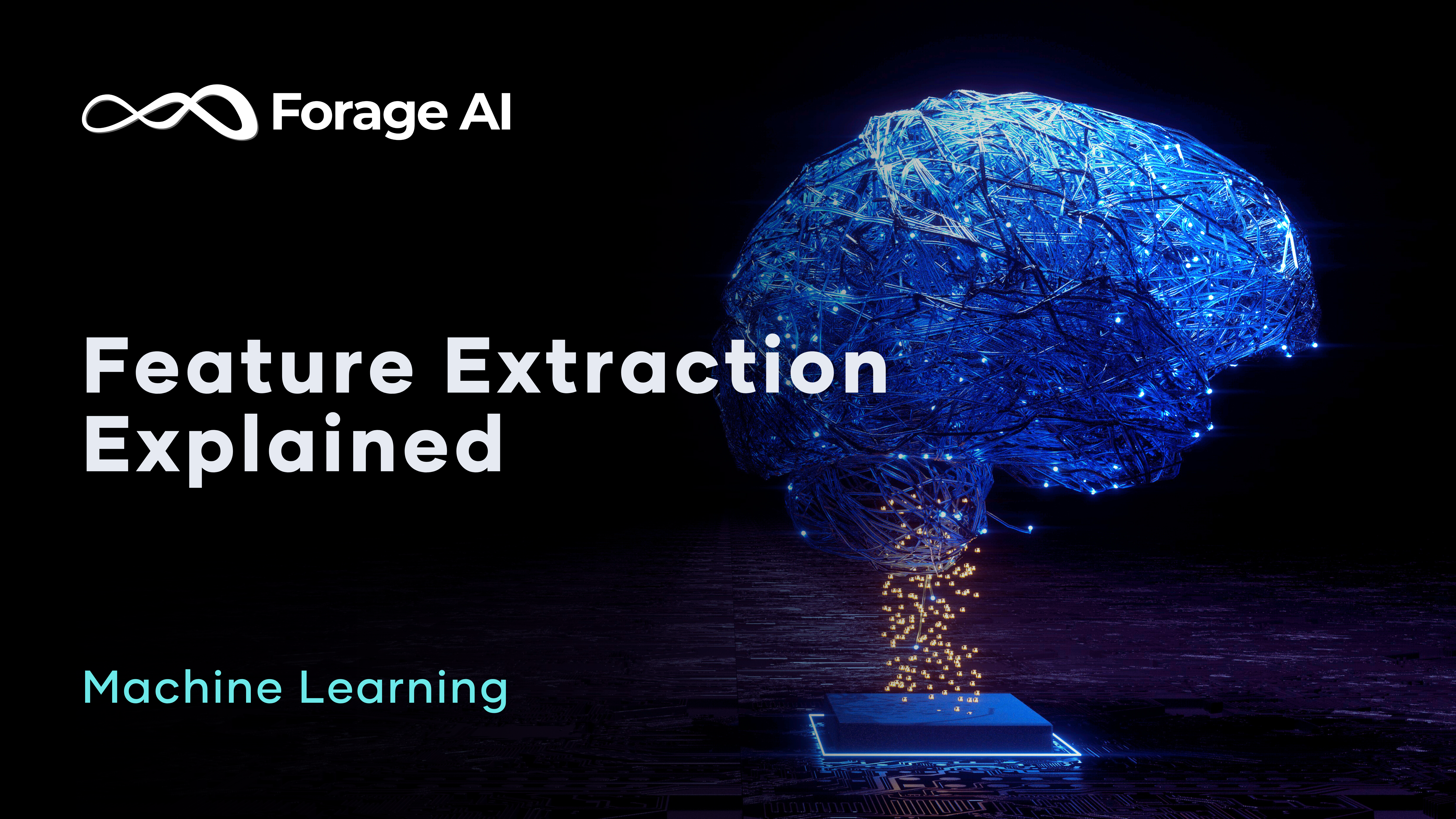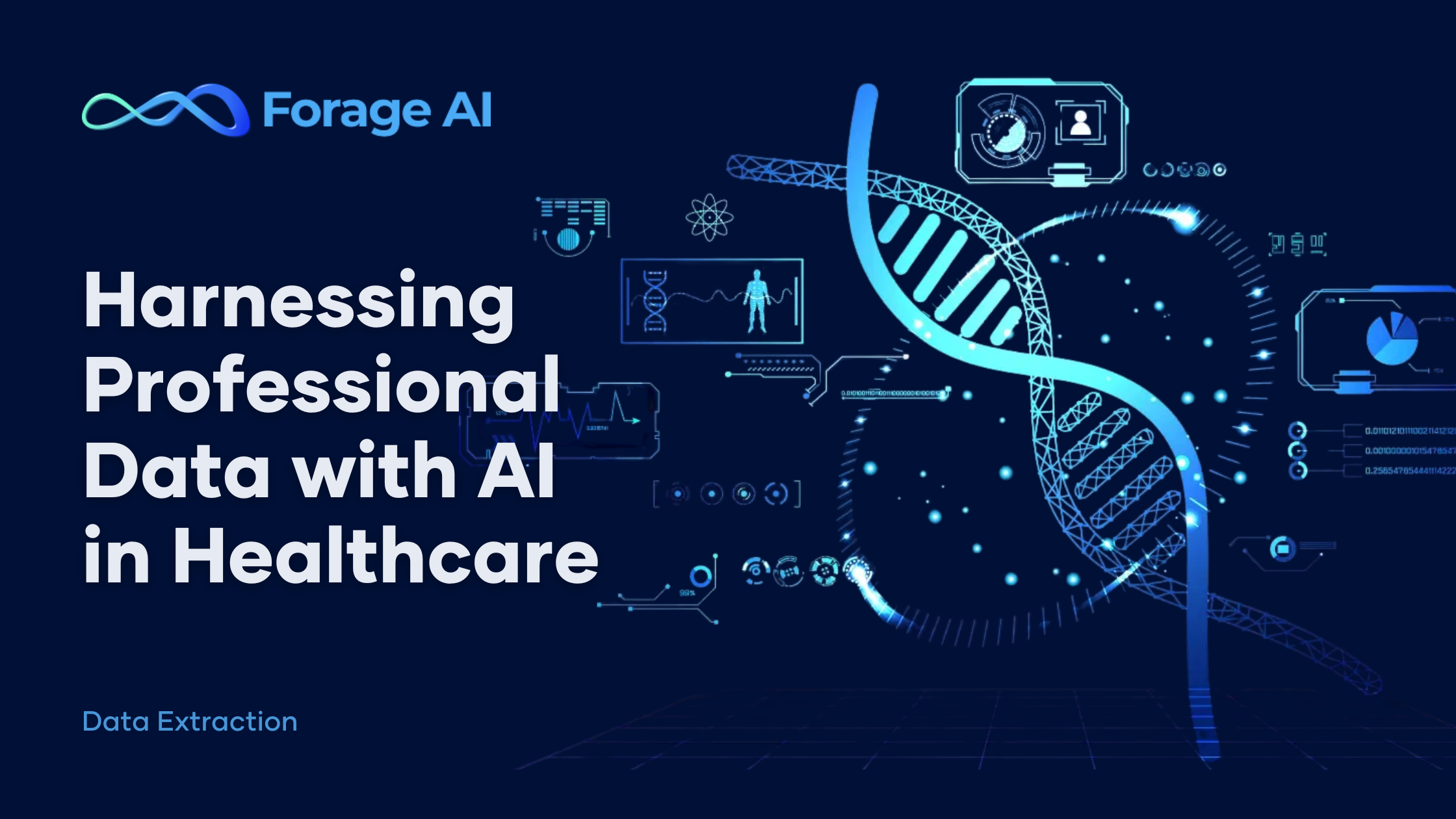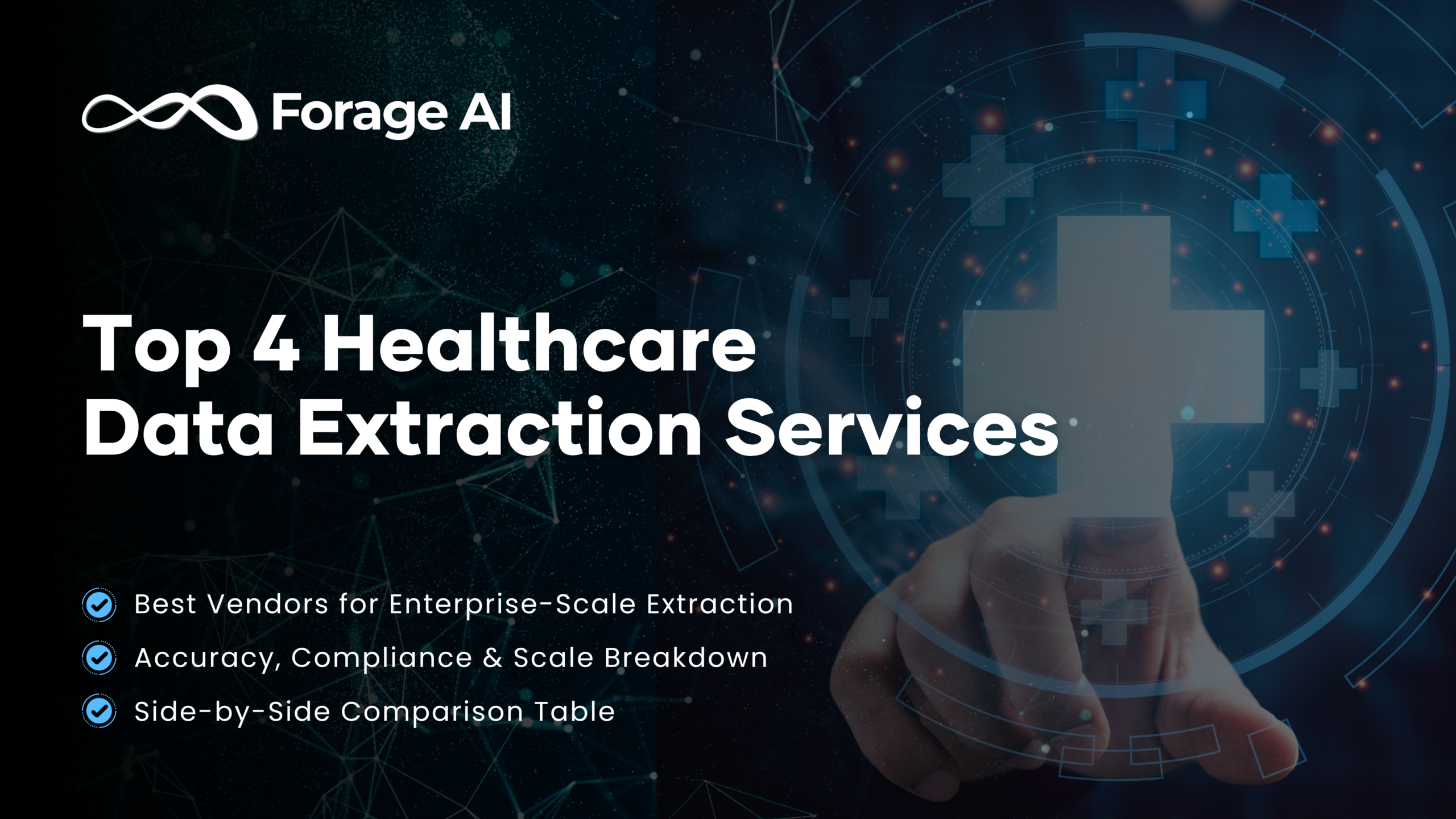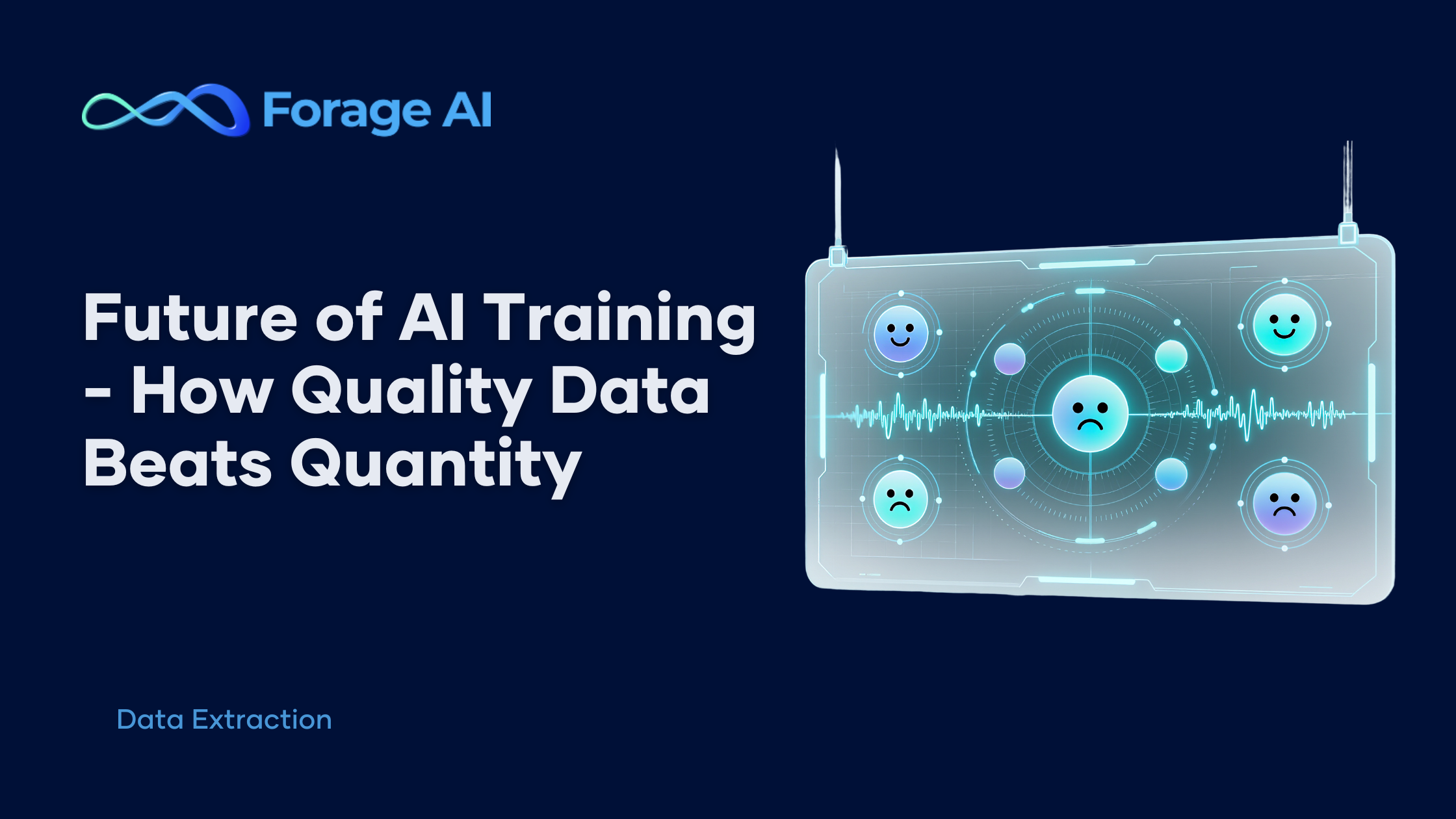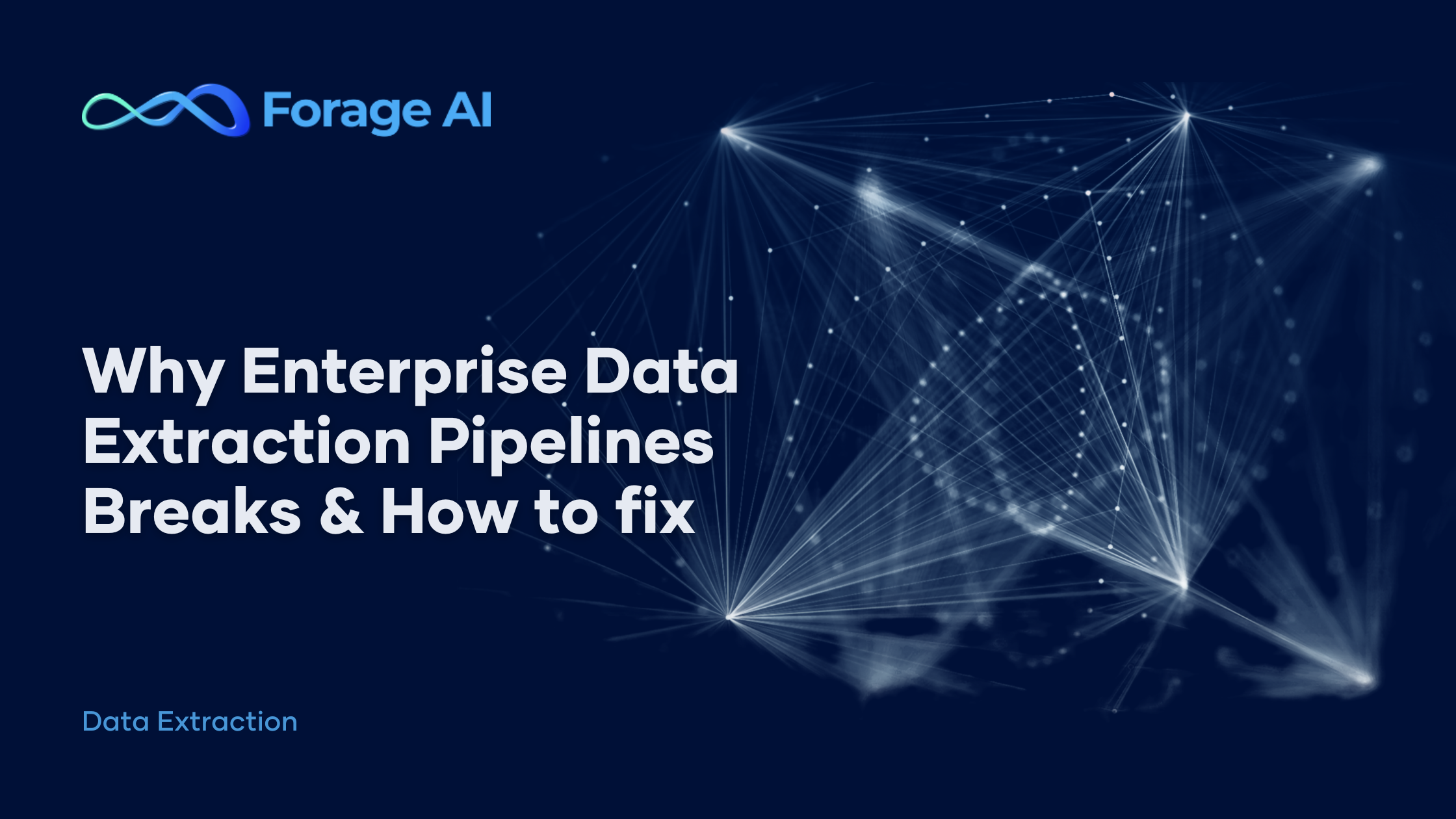Feature extraction is a critical process in the data analytics and machine learning pipeline, where complex data is transformed into a set of representative characteristics—called “features.” These features are derived from raw data to highlight the most relevant information, enabling more accurate analyses, predictions, and insights. The objective is to reduce the dimensionality of data while retaining its essential characteristics, leading to faster computations and better model performance.
Below, we’ll explore what feature extraction is, how it fits within data workflows, the advanced methods used today, and how Forage AI’s state-of-the-art solutions support this essential step.
Why Feature Extraction Matters
Feature extraction is pivotal because raw data is often messy and unwieldy. Raw information can be noisy, redundant, and overwhelming, whether it’s numerical data, text, images, or structured documents. Feature extraction addresses this by identifying the most relevant elements, reducing dimensionality, and allowing algorithms to work more effectively.
Key Benefits:
- Dimensionality Reduction: Simplifies datasets by reducing the number of variables without losing critical information, making algorithms more efficient.
- Enhanced Accuracy: Extracted features are more meaningful, leading to models that make more accurate predictions.
- Focus on Insights: By filtering out the noise, feature extraction allows analysts and AI systems to concentrate on the most valuable information.
The Process of Feature Extraction
Feature extraction is all about converting raw data into a more usable and organized format, highlighting the most important information. Depending on the type of data, different techniques are used to pull out what matters most. Here are some common methods:
- Statistical Analysis: This method involves finding patterns in numbers. Think of it like summarizing a large spreadsheet of numbers by focusing on the key trends without getting lost in the details. Techniques like PCA (Principal Component Analysis) help to spot these trends, making large datasets more manageable.
- Textual Data Handling: For data that involves lots of words—like documents or social media posts—methods such as TF-IDF (Term Frequency-Inverse Document Frequency) and Word2Vec help convert words into numbers. This way, computers can understand the importance of certain words, identify main topics, and even pick up on the overall tone or sentiment.
- Visual Feature Extraction: When dealing with images, tools like Convolutional Neural Networks (CNNs) look for important details such as shapes, colors, and textures. This allows images to be analyzed more like a set of data points, making it easier to identify objects or patterns.
- Document Structuring: For files like PDFs or reports, feature extraction means breaking down the content into usable pieces. This might include pulling out tables, important data points, or key sections from the text, transforming raw documents into a structured dataset that’s ready for analysis.
By focusing on the core information, feature extraction makes it easier to work with large, complex datasets and get insights without being overwhelmed by unnecessary details.
Advanced Techniques in Feature Extraction
With the rise of AI and machine learning, feature extraction has evolved from manual and statistical methods to sophisticated, automated solutions:
Deep Learning-Based Extraction
Modern deep learning models, such as CNNs and transformer-based architectures, excel at automatically learning significant features without manual intervention. These models distinguish complex patterns essential for handling difficult visual and textual data that traditional approaches might miss.
- CNNs for Image Analysis: Useful for identifying complex visual patterns.
- Transformer Models for NLP: Can extract semantic relationships, understand context, and identify key information from large text datasets.
Feature Learning with LLMs
Large Language Models (LLMs) like GPT have revolutionized text-based feature extraction by handling nuanced language details. They are proficient at understanding context, detecting relationships between words, and parsing complex documents without predefined templates.
Multi-Modal Approaches
Feature extraction isn’t limited to one data type. Multi-modal models combine text, images, and tabular data, extracting relevant features from diverse sources to create a cohesive understanding. For example, a financial report might include tables, narrative explanations, and visualizations—multi-modal extraction techniques ensure no detail is overlooked.
Where Feature Extraction Fits in the Data Workflow
Feature extraction is a preliminary step in the broader data pipeline between raw data collection and model training. It prepares data for machine learning by structuring and filtering it, ensuring that only the most informative aspects reach the model:
1. Data Collection
What it is: Data collection involves gathering raw data from various sources that are relevant to the task. This can include structured data (like database entries), unstructured data (text, images), or semi-structured data (emails, web pages).
Example: A retail company wants to predict future sales trends. The first step involves collecting data from sources such as online transaction records, customer feedback, web clickstream data, and social media mentions.
Forage AI’s Contribution: Using Forage AI’s web extraction solutions, you can efficiently gather web-based data, extracting precise information from social media, competitor websites, and product reviews—ensuring a comprehensive dataset from the start.
2. Data Cleaning
What it is: Once the data is collected, it must be cleaned to remove errors, inconsistencies, duplicates, and irrelevant information. This step ensures data integrity, which is critical for accurate feature extraction and model performance.
Example: Continuing with the retail example, the transaction data might contain missing values, redundant entries, or outdated information. Cleaning involves handling missing fields, normalizing formats (e.g., converting all dates to the same format), and removing duplicates.
Forage AI’s Contribution: Forage AI’s intelligent document processing (IDP) solutions automate the cleaning process for documents and web data, using AI models to identify and correct inconsistencies, fill in missing information, and ensure a high-quality dataset.
3. Feature Extraction
What it is: Feature extraction transforms cleaned data into structured information that is most relevant to the problem at hand. This involves selecting or creating variables (features) that best capture the underlying patterns in the data.
Example: In the retail example, after cleaning, you extract features such as:
- Sales volume per product category (aggregated weekly)
- Customer sentiment score from social media mentions (positive, negative, neutral)
- Discount impact on sales (percentage of discount applied vs. increase in sales)
These features become the inputs for predictive models, helping the company anticipate future sales trends.
Forage AI’s Contribution: With Forage AI’s AI-driven systems, features are automatically extracted using deep learning techniques, particularly in complex scenarios involving textual and visual data. This saves time and reduces the chance of human error in selecting relevant data points.
4. Model Training
What it is: In this phase, the features extracted are used to train machine learning models. The goal is to find patterns in the data that can predict future outcomes or classify data accurately.
Example: Using the retail dataset with extracted features, a machine learning model (like a regression or a neural network) is trained to predict sales for the upcoming quarter. The features—like discount percentage and customer sentiment—help the model understand the factors influencing sales performance.
Forage AI’s Contribution: Forage AI’s pre-processed and domain-specific datasets from their Data Store can accelerate the model training phase by providing ready-to-use data tailored to industry requirements, ensuring optimal model performance. Our robust AI solutions team can also assist in preparing models to meet your unique needs, working alongside you to maximize efficiency and enhance predictive accuracy.
5. Evaluation and Deployment
What it is: After training, the model’s performance is evaluated using metrics like accuracy, precision, recall, or mean squared error. Once the model is validated, it’s deployed into a production environment for real-time decision-making.
Example: The retail company’s sales prediction model is tested with historical data, and performance metrics are evaluated. If the predictions are accurate, the model is deployed to provide ongoing sales forecasts, helping the company optimize inventory and marketing strategies.
Forage AI’s Contribution: Forage AI supports the evaluation phase by ensuring that data quality and relevance are maintained, providing comprehensive datasets that allow for accurate model validation. Once models are live, Forage AI’s tools continue to extract and clean data for real-time updates, enabling dynamic model adjustments.
Feature Extraction’s Role in the Age of LLMs, RAGs, and AI Agents
Feature extraction has always been about capturing the most informative aspects of raw data, but its role has significantly evolved with advancements in AI technologies, especially in 2024. The landscape of Large Language Models (LLMs), Retrieval-Augmented Generation (RAG), and autonomous AI Agents relies heavily on effective feature extraction to enhance performance, improve accuracy, and handle complex tasks.
1. Enhancing Large Language Models (LLMs) with Feature Extraction
Modern LLMs like GPT-4, BERT, and LLaMa depend on efficient feature extraction to understand context, reduce noise, and highlight relevant information. Proper feature extraction helps LLMs focus on the most critical elements in a dataset, facilitating better text comprehension and generation.
2. The Power of Retrieval-Augmented Generation (RAG)
RAG systems combine the power of LLMs with retrieval components that fetch relevant information from databases or proprietary knowledge bases in real time. Extracted features—like keywords, context markers, or metadata—form the basis for efficient retrieval. They determine how data is indexed and retrieved, ensuring that relevant information is accessible for generation tasks.
3. AI Agents and Dynamic Decision-Making
Autonomous AI agents rely on extracted features to build a nuanced understanding of their environment. Features act as decision-making cues for AI agents, enabling them to perform complex tasks autonomously—from data analysis to generating content and more.
Challenges in Feature Extraction
Feature extraction, while crucial, comes with several obstacles that make it a complex task. Each challenge can hinder the ability to extract accurate and valuable insights from data. Here are the major hurdles:
1. Handling Complex and High-Dimensional Data
Imagine trying to find meaningful information in a huge spreadsheet with thousands of columns and rows. High-dimensional data can be overwhelming, with endless variables that may or may not be relevant. The risk is twofold: either missing key patterns or getting bogged down by irrelevant details. Traditional methods often struggle to handle this complexity, leading to oversimplification or missed insights.
2. Dealing with Noisy and Unstructured Data
Raw data rarely comes neatly packaged. Instead, it’s often messy, filled with irrelevant details, inconsistencies, and inaccuracies. Unstructured data like social media posts, emails, or scanned documents contains a mix of useful information and clutter—making it hard to distinguish valuable signals from noise. Extracting reliable data in such scenarios is like searching for a needle in a haystack.
3. Industry-Specific Nuances
Not all data is created equal. Different industries have unique requirements, terminologies, and formats. A generic approach might work for simple use cases, but when it comes to specialized sectors—like finance with strict regulations, healthcare with sensitive patient information, or e-commerce with diverse product attributes—one-size-fits-all solutions simply fall short. Tailoring feature extraction to these needs requires deep domain expertise.
4. Scalability with Big Data
Data volumes are expanding rapidly, and handling them efficiently is a challenge. A system that works for smaller datasets can fail when scaled to terabytes of information. Performance issues, storage limitations, and processing delays can turn feature extraction into a slow and resource-heavy task if not properly managed.
5. Accuracy and Precision under Tight Constraints
Extracting features accurately is paramount, especially in fields where decisions hinge on precise data, like finance or healthcare. A small error in data extraction can have significant repercussions, leading to flawed predictions, compliance issues, or lost business opportunities. Balancing speed with the need for precision remains a persistent challenge.
Forage AI’s Expertise in Overcoming Feature Extraction Challenges
Handling Complex and High-Dimensional Data
Forage AI’s Intelligent Document Processing (IDP) is designed to tackle high-dimensional data with advanced machine learning and AI models. These systems excel at finding patterns in complex datasets without oversimplification. Forage’s IDP tools utilize deep learning to detect structures in documents and extract nuanced details accurately, ensuring that no relevant information is lost. This capability is particularly useful for industries like finance and legal, where data complexity requires precise handling of multiple variables.
Mastering Noisy and Unstructured Data
To tackle messy and unstructured data, Forage AI utilizes Large Language Models (LLMs) and Visual Language Models (VLMs) alongside advanced Optical Character Recognition (OCR) within their Intelligent Document Processing (IDP) solutions. These cutting-edge tools can not only filter out noise but also understand context in complex datasets, including fragmented text, low-quality scans, and mixed media. By leveraging the power of LLMs and VLMs, Forage AI can accurately identify, categorize, and extract key information from various sources. Sophisticated cleaning and quality assurance algorithms then refine this data, automatically correcting inconsistencies and ensuring that organizations receive clean, reliable, and actionable insights every time
Industry-Specific Expertise
Forage AI’s Data Store provides a library of pre-processed, industry-specific datasets, tailored to meet the unique demands of various sectors. In addition, our custom data extraction and crawling solutions can get you the targeted data based on your specific needs. These resources are invaluable for handling industry-specific challenges, offering datasets that are already structured and formatted for particular use cases—whether in healthcare, finance, e-commerce, or legal fields. This ensures that feature extraction aligns perfectly with domain-specific standards and compliance requirements.
Scalable Solutions for Big Data
Forage AI’s infrastructure is designed to manage large-scale data extraction tasks seamlessly while prioritizing privacy and security. Our web data extraction and Intelligent Document Processing (IDP) systems are cloud-based but also offer on-premises solutions for organizations with strict data governance needs. This flexibility allows businesses to choose between scalable cloud environments or secure on-prem setups, ensuring compliance with regulatory standards. Additionally, Forage AI employs robust security protocols and advanced encryption techniques to safeguard sensitive data throughout the extraction process, handling everything from gigabytes to terabytes of information without sacrificing speed, accuracy, or security.
Ensuring Accuracy and Precision
Forage AI places a strong emphasis on precision through its AI-powered validation mechanisms. These mechanisms continuously monitor the quality of extracted features, using real-time validation to catch errors and verify data accuracy. Forage’s combination of AI and NLP tools is optimized for delivering exact results, reducing the risk of mistakes in high-stakes industries like healthcare and insurance. Additionally, our dedicated QA team provides human validation to further ensure data integrity, bringing an added layer of confidence and accuracy to the process.
Conclusion: The Future of Feature Extraction
Feature extraction is a foundational process that directly influences the success of data-driven initiatives. It involves identifying relevant data and transforming it into meaningful insights that drive decision-making. As data complexity continues to grow, the role of advanced AI tools in feature extraction will only become more critical.
Forage AI leads the way with innovative, AI-driven extraction solutions, handling vast, unstructured data and transforming it into actionable insights. Our commitment to combining deep learning, intelligent document processing, and cutting-edge web data extraction ensures that organizations can harness the power of data with precision and accuracy.
Interested in optimizing your data pipeline with precise feature extraction? Contact Forage AI today to learn how our tailored solutions can support your industry needs and empower your data automation projects.
